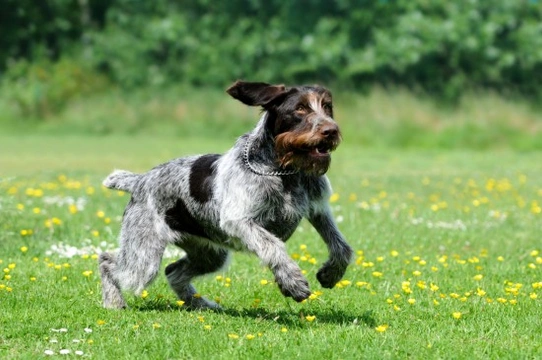
Calming down a hyperactive dog
If your dog is constantly fizzing with energy and is easy to excite, taking care of them and keeping your sanity at the same time can be a challenge! If your dog goes loopy at the sound of the doorbell or the sight of their lead, and can often be found racing around the house, getting into mischief or bouncing up and down and clamouring at you and other people they meet, the chances are that you’ve got your hands full.
Some breeds and types of dogs are certainly more prone to excitability and hyperactivity than others, such as the collie, the husky and other working dog breeds such as the springer spaniel, and you should be aware of this before taking on a dog of these types. However, any dog large or small may be prone to hyperactivity, either as a learned behaviour or because the way that they are cared for and managed on a day to day basis is not wholly appropriate for their needs.
If you are having problems managing a hyperactive dog and wonder if there is anything that you can do to make life easier, read on to learn more.
Training
A dog that is unruly or out of control may appear to be hyperactive, because they simply do not understand what is desired or expected of them, and that bouncing around and zooming about in some situations is not appropriate. Address your dog’s understanding of basic training commands and his compliance before you go any further. Channelling some of your dog’s energy into learning training commands will not only help to keep their mind engaged and cancel out some of their propensity to hyperactivity, but it is also an essential building block that is needed in order to be able to deal with your dog’s fizzy personality using other options.
Exercise
One of the keys to tackling hyperactivity in the dog is ensuring that your dog is exercised enough. Different dogs have different exercise requirements, and assuming that because a sedate half hour walk is sufficient for one dog that it will also be sufficient for another is a mistake! If your dog does not get the opportunity to exercise and run sufficiently in the appropriate setting, they will be much more likely to need to seek other outlets for their energy, such as by displaying hyperactive behaviour within the home. When you bring your dog back from a walk he should be tired but not exhausted, and seek some quiet time to rest and recuperate. If your dog is still bounding about and ready to go out and do it all again as soon as you get home, the chances are that his walk was not enough!
Dietary considerations
Different diets for dogs are available based on activity levels and life stage, and you should double check if the food your dog eats is a good match for his. Working dogs that are active and outside all day require a high calorie, high energy diet to support this, but a diet of this type will almost certainly be inappropriate for the average pet dog living within a domestic environment, and can lead to hyperactivity.
Tackling learned behaviours
Many dogs learn bad behaviours either directly or indirectly from their owners or handlers; such as bouncing around and jumping up to indicate that they are pleased to see you, or becoming overexcited at the idea of a walk. Consider if some of the behaviours your dog is displaying are related to particular incidents or situations rather than being a generalised propensity to overexcitement, and tackle the cause and response to these situations individually.
Canine sports
A great outlet for the energy levels of hyperactive dogs is to get them involved in some active canine sports such as agility, which stimulate both the mind and the body. This can also help you to work on your dog’s training, and your bond with and understanding of each other. Even if you don’t wish to join an organised group or take up a canine sport with a view to competition, try to set up some games and activities with your dog on a regular basis that allow them the opportunity to both burn off their energy, and exercise their mind.
A dog that is switched on and thinking is using up more energy than one that is simply running around, and catering to your dog’s need for mental stimulation can go a long way towards addressing hyperactive behaviours.
Canine massage
Possibly a rather unusual suggestion for dogs, but massage is renowned to have a calming, relaxing effect on people, and there is no reason why your dog should not reap the same benefits as well!
Canine massage is something that you can do for your dog at home yourself, in order to help him to calm down and relax. The best time to begin is when your dog is already amenable to rest, such as when he is tired after a walk. Begin by stroking around the face and head, moving on to gently rubbing around the ears and eyes, and progressing to the neck and the rest of the body.
The effects of aging
Understandably, puppies and younger dogs tend to be more active and energetic than older dogs, and you might find that as your dog ages, they will naturally become less hyperactive. However, you might have a fairly long wait for the issue to start resolving itself on its own; don’t expect your dog to take up a pipe and slippers until he is approaching middle age, around seven or eight years old!



